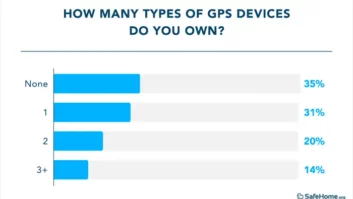Chicago – Fifty percent of Americans use a mobile device
to shop, according to a study released today by Arc Worldwide, Leo
Burnett’s marketing services arm.
Whether it’s comparing prices of TVs, ordering a morning
latte or reading restaurant reviews – mobile shopping has become a way of life
for Americans, the report states. This trend is quickly and decisively changing
the traditional shopping journey and leaving companies with a serious
ultimatum: deliver valuable mobile experiences or risk losing customers.
In December
2010, Leo
Burnett and Arc Worldwide conducted a nationwide quantitative
survey interviewing 1,800 U.S. mobile phone owners. In addition, a smaller
qualitative research study was fielded with 30 mobile shoppers. The respondents
used webcams and flip video to capture their mobile shopping experiences.
“Mobile shopping has created multiple paths to purchase,”
said William
Rosen, president and chief creative officer of Arc Worldwide.
“It has completely transformed the way people research and purchase
products. Companies looking to crack the ‘mobile code’ must understand
shoppers’ unique demands by category and shopper type, which we have carefully
explored in this study.”
The study – “Marketing to the Mobile Shopper” –
identified five key findings companies should note when implementing mobile
shopping strategies:
1) MOBILE SHOPPING
IS A LOVE, HATE RELATIONSHIP
. Today’s mobile shoppers are split into two
groups – heavy and light shoppers. “Heavies” are forever attached to their
mobile device and love experimenting with new apps. “Lights” are just the opposite,
viewing their mobile as an inferior “on-the-go” version of their computer,
doing basic mobile shopping activities including, looking up store hours and
locations.
“While the majority of recent retail and brand mobile
efforts have focused on the needs of heavy mobile shoppers, we learned this
group is actually quite small – about 11 percent of mobile phone owners,” said Molly
Garris, digital strategy manager of Arc Worldwide. “There’s
a new group of phone owners, light mobile shoppers, whose needs are not being
met.”
Light shoppers are the future of mobile shopping and with
time will become more familiar with their mobile device evolving into heavy
mobile shoppers. When this evolution takes place, the mobile shopping
population will increase by 50 percent. Moral of the story: engaging lights
earlier, with simple solutions, will lead to customer loyalty in the future.
2) A NEW CAR
PURCHASE? LOOKING TO SHAKE UP YOUR MORNING LATTE ORDER? YOUR MOBILE CAN HELP
YOU DO BOTH.
Shopping for big ticket items – once pursued with tireless
research and planning – is now being treated casually as people rely on their
mobile to do the work, the survey indicates.
In contrast, simple tasks like buying your morning coffee
now receive careful consideration due to expansive mobile apps allowing
customized interactions and experiences. Depending on the product, be prepared
to satisfy shoppers by offering mobile shopping experiences that touch both
ends of the spectrum.
3) MALLRATS OF
YESTERDAY ARE TODAY’S “GOT A MINUTE” MOBILE SHOPPERS.
Americans
want a spontaneous and fluid mobile shopping experience. To meet consumer’s
needs, marketers need to create relevant mobile interactions that are in tune
with their audiences’ day-to-day lives.
4) INSTANT
GRATIFICATION IS KING.
Today’s mobile shopper searches for a new outfit,
orders take-out and scoops up the latest Lady Gaga album with just a few taps
on their mobile. To succeed companies must provide value-add mobile apps and
websites. To reach all types of mobile shoppers, companies should activate both
mobile on the go and mobile in-store interactions, the survey indicates.
5) MANUFACTURERS
AND RETAILERS UNITE!
Both sides should work together to create a
one-stop-shop for mobile shoppers to collect discounts, view product
specifications and inventory status. This comprehensive experience pulls
shoppers through the purchase and may encourage a similar transaction process
in the future.
“Mobile gives companies the power to market in a way that
no channel ever has before by uniting the power of digital, promotion, retail
and database marketing,” said Rosen. “From researching and browsing, to buying
and recommending, shoppers expect meaningful and useful mobile shopping
experiences. The stakes are only getting higher as more and more shopping moves
onto mobile.”
To view the complete findings from the study,
“Marketing to the Mobile Shopper” visit,
http://leolens.leoburnett.com/index.php/2011/03/marketing-to-the-mobile-shopper/
and click “download the whitepaper.”













